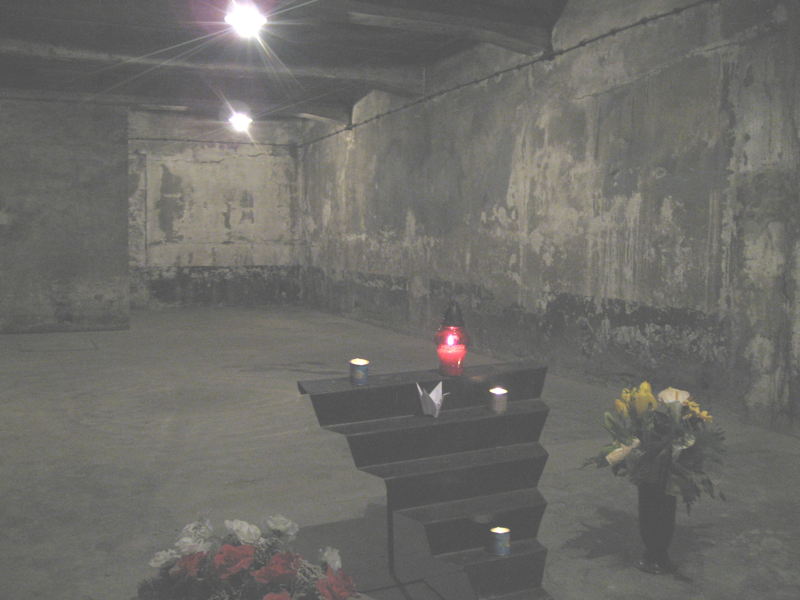Auschwitz (Oswiecim), near Kraków
Auschwitz Museum — main entrance
After the German invasion and occupation in 1939 (the "September Campaign of 1939" to the Polish), the Nazis were awash in Polish political prisoners. In 1940, the Nazis used prisoner overcrowding in Silesia as the rationale for establishing a concentration camp in the deserted Polish Army barracks outside the town of Oswecim (thereafter "Auschwitz"). Prisoners were Polish prisoners of war, those broadly deemed dissenters or political agitators, and often their families to quell possible revolt against the new order. The first prisoners — 728 Poles from Tarnow — were transported to Auschwitz in June, 1940.
May 2007, Photo 863

Auschwitz, barracks and guard tower
In response to an exploding prison population from mass arrests throughout Poland, construction of "Auschwitz II", or "Birkenau", in the village of Brzezinka 3 km from Oswecim, began in 1941. In 1941, SS Reichsfuhrer Heinrich Himmler identified the camp at Auschwitz as his preferred site for the eradication of Europe's Jewry ... a plan that was finalized in the January, 1942 Wansee Conference as the "final solution" to the 'Jewish question'.
In 1942, "III" in nearby Monowice was built to provide forced labor for Germany's IG-Farbenindustrie chemical plant. From 1942 — 1944, about 40 additional, smaller camps were built under the aegis of Auschwitz III. These were mostly set up near mines, steelworks, and factories to exploit prisoners as cheap labor. The camps in Auschwitz (I) and Birkenau constitute the Auschwitz Museum (Panstwowe Muzeum), a UNESCO World Heritage Site.
May 2007, Photo 864
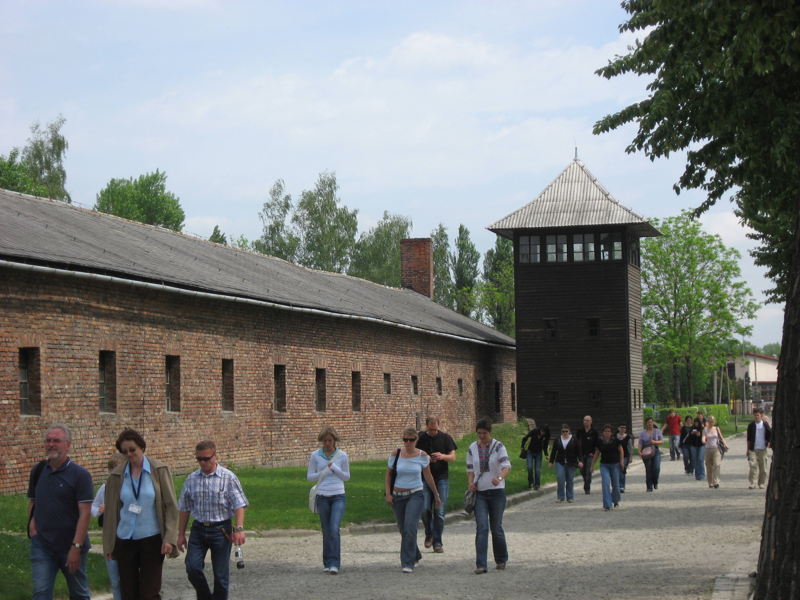
Auschwitz, camp kitchen and electrified border fence
On the small square by the kitchen, the camp orchestra played marches as prisoners passed by each day for work. This enabled the SS to more efficiently count the prisoners.
The ratio of Nazis, including guards from Ukraine, to prisoners was typically about 1:50. Also, the camp complex is bounded on two sides by rivers; after the 1940 Nazi invasion of the Soviet Union, all of Poland was Nazi territory. (That the Soviets invaded and occupied the eastern half of the country in 1939 while the Nazis did the same with the western half could afford no security as evidenced by the Katyn Forest massacre of 1940. The Poles Given these facts and the extent of the Nazi subjugation and occupation of most of Europe, en masse escape was not feasible.
May 2007, Photo 865
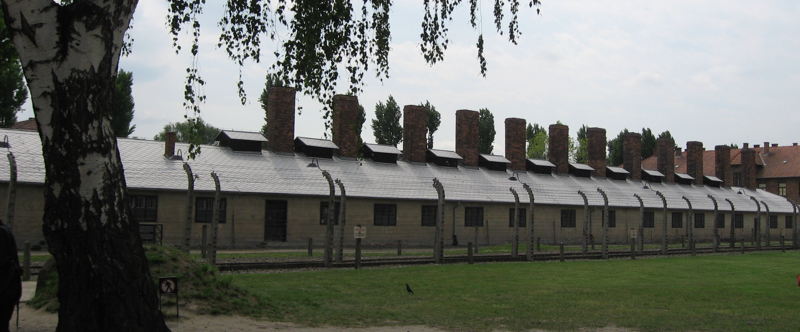
Main gate to Auschwitz I. Cynical sign reads: "Arbeit macht frei" (Work brings freedom)
The number of people killed at the Auschwitz complex can't be accurately determined since not all were 'registered'. Many died en route due to the harsh transport or were killed immediately after arrival without being registered (only those not immediately killed were tattooed with a number). Estimates of those murdered in the Auschwitz complex, then, vary from 1.5 million — 4 million people and include Soviet prisoners-of-war, Romany (Gypsies), Poles and, mostly, Jews. To paraphrase the goal of an SS man (can't remember who, but wasn't Himmler) as posted on a wall at the museum: 'The world should be free of Jews and Gypsies, Russians and Poles.' Unbelievable. We were both beginning to get numb.
May 2007, Photo 866
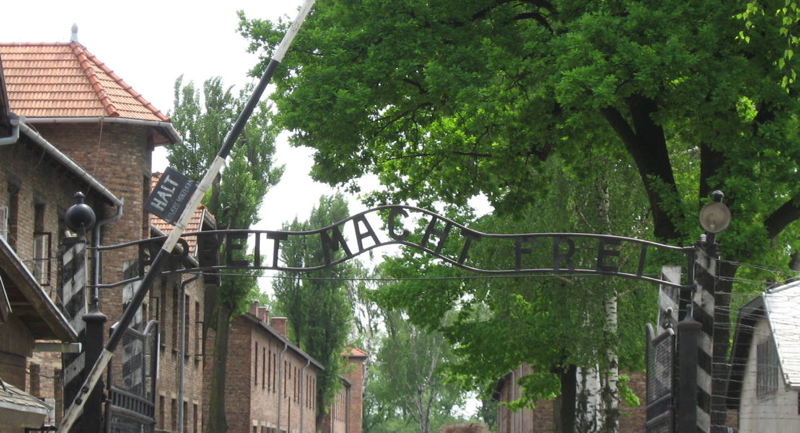
Main gate to Auschwitz I
May 2007, Photo 870

Auschwitz, guard tower
May 2007, Photo 869
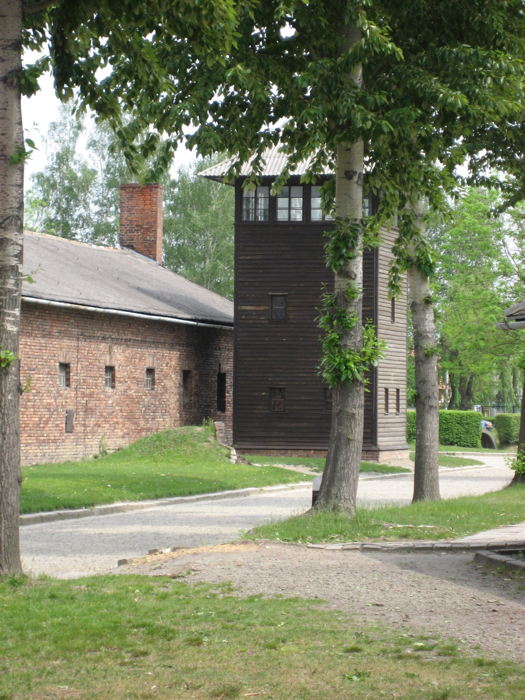
Auschwitz; the fence was electrified by the Nazis
May 2007, Photo 872
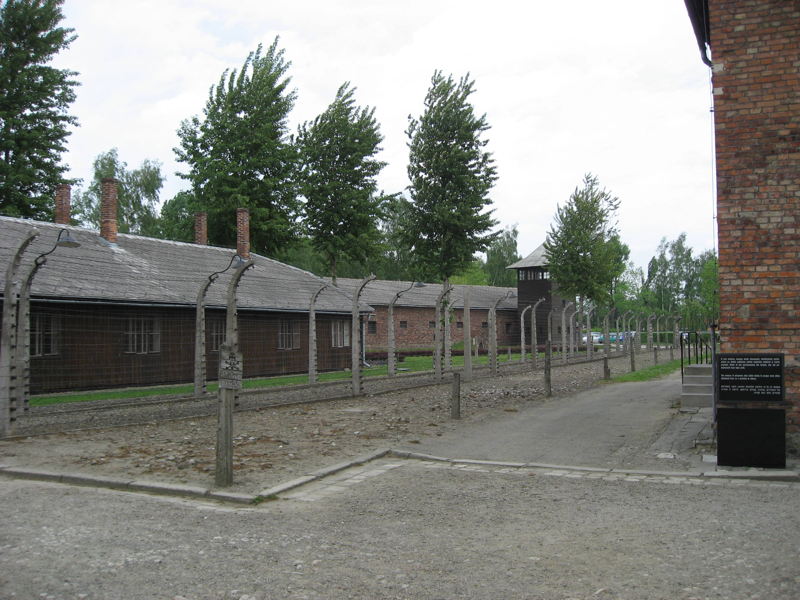
Auschwitz, camp kitchen
May 2007, Photo 873
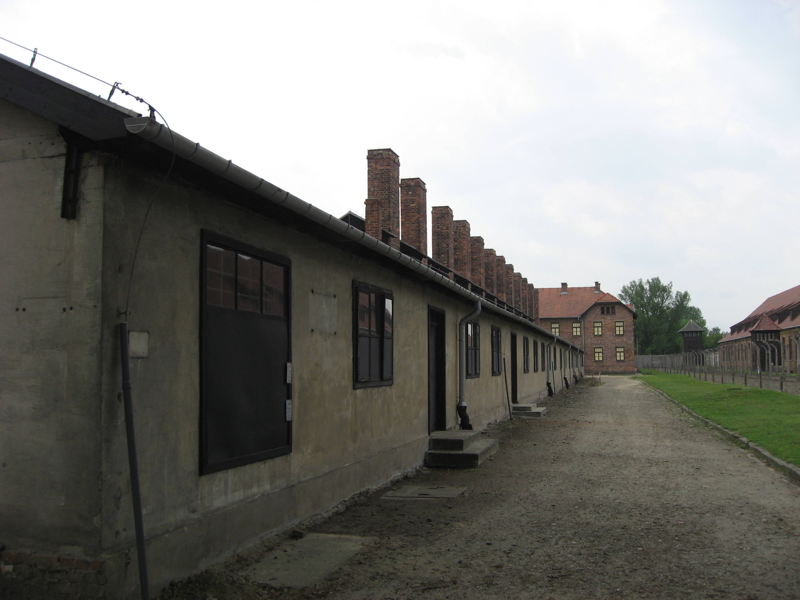
Auschwitz, administration buildings
Many of the brick buildings in Auschwitz I were original to the former Polish Army barracks that are the nucleus of Auschwitz.
May 2007, Photo 874
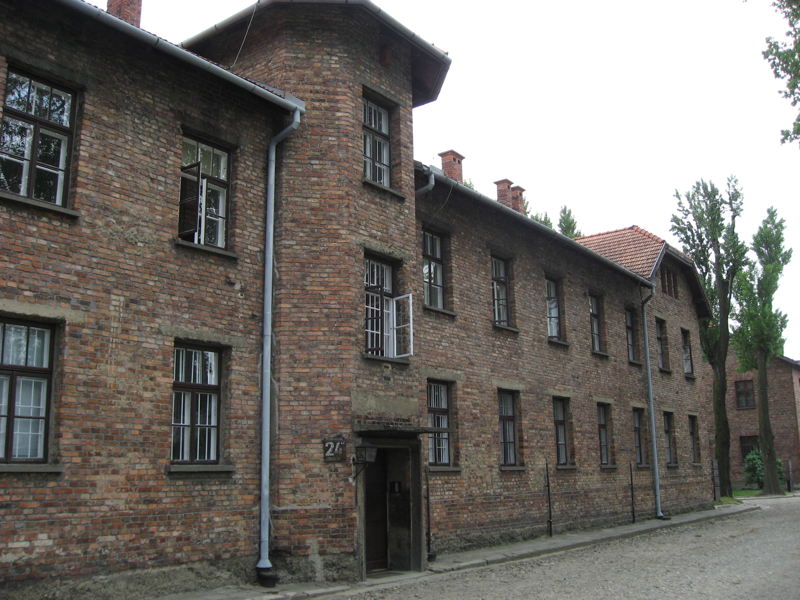
Auschwitz, street and barracks
May 2007, Photo 876
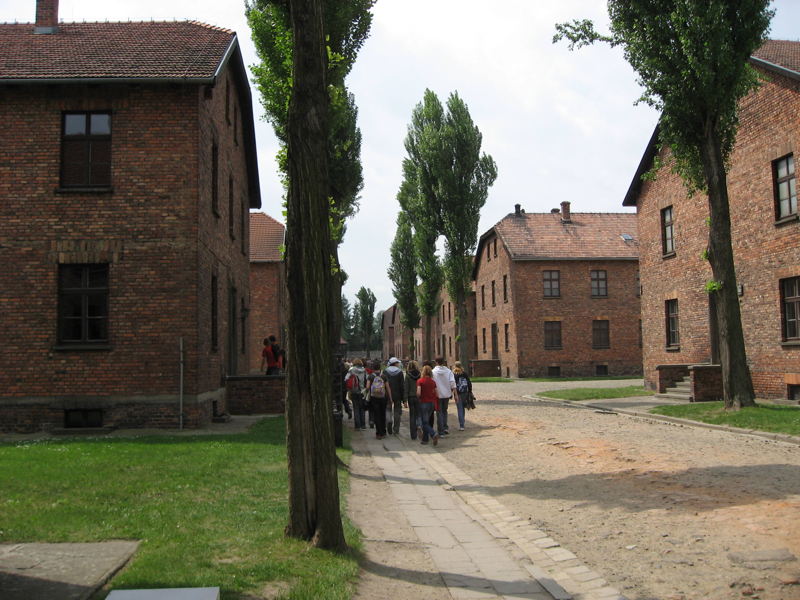
Auschwitz, street and barracks
May 2007, Photo 884
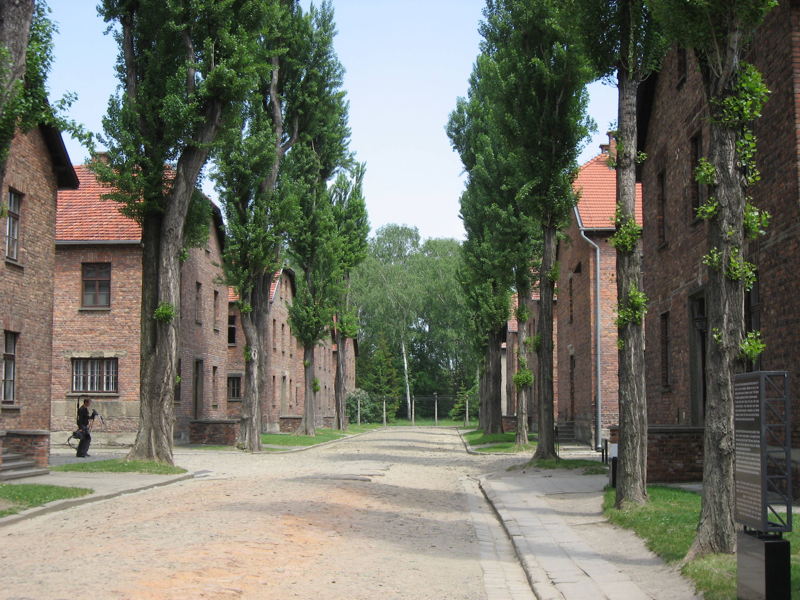
Auschwitz; some shoes of inmates and executed deportees. Kate was weepy at sight of those of children; beyond awful
As the Soviet Army advanced on Auschwitz prior to liberating the camps January 27, 1945, some of stockpiled deportees' and inmates' belongings were hastily shipped elsewhere and 30 warehouses of such goods burned down. Yet, the Soviets found literally tons of personal belongings including shoes; clothing including Jewish prayer shawls; eyeglasses; and luggage with deportees' names. Empty cans of Zyklon B, used to kill 1,500 -2,000 people at a time in gas chambers, and various documents and other items were also found. All are displayed in the Auschwitz Museum and are original finds of the Soviets after they overran the camps or were found elsewhere later. E.g., bales of 'haircloth', used for tailor's lining, were found in Kietrz (Poland) after liberation. The haircloth has been analyzed by the Institute of Forensic Medicine (in Krakow, we believe) and "found to be human hair, likely that of women."
May 2007, Photo 883
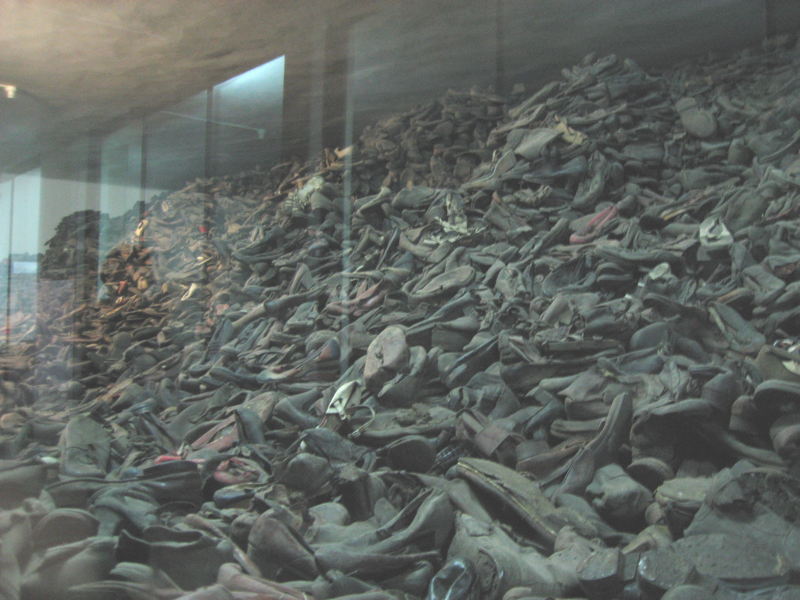
Auschwitz; the execution wall outside Block 11, the "Death Block"
The Nazis held "trials" of offending inmates in this block (building). It includes, as we saw, tiny, bricked-in "stand up" cells — a punishment by which the offender must stand up all night after working a typical 12-hour day on little food and return to work the next day or be executed, and "starvation cells" for inmates condemned to death by starvation. Other forms of sadistic punishment was meted out in the building or in the courtyard of the execution wall.
May 2007, Photo 886
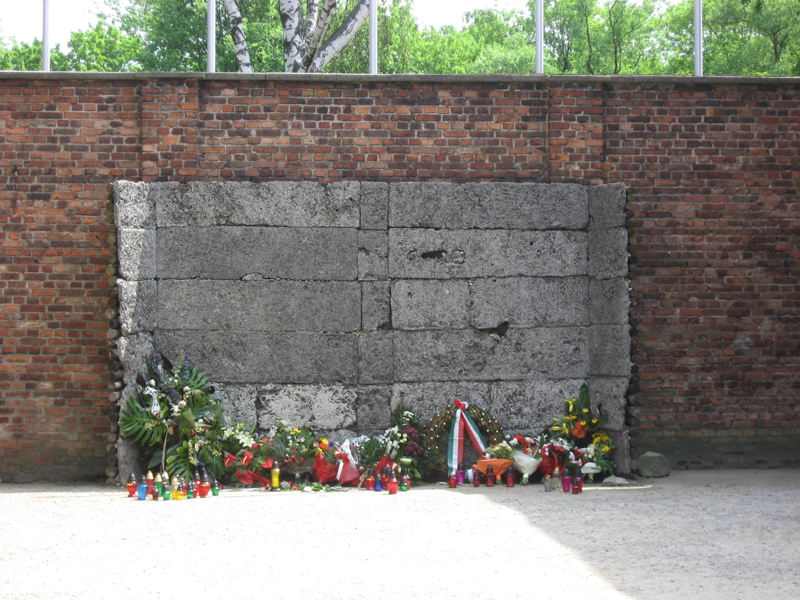
Auschwitz, guard tower, barbed wire
May 2007, Photo 888

Auschwitz, extant chimney of a crematorium
May 2007, Photo 891
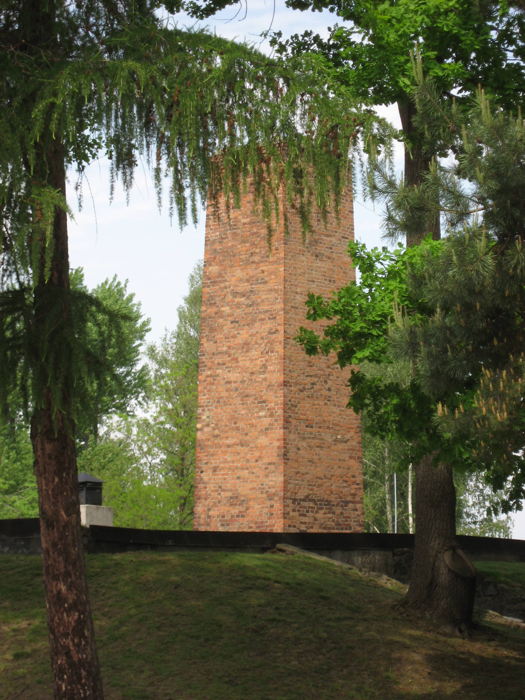
Auschwitz, interior of crematorium
May 2007, Photo 895
